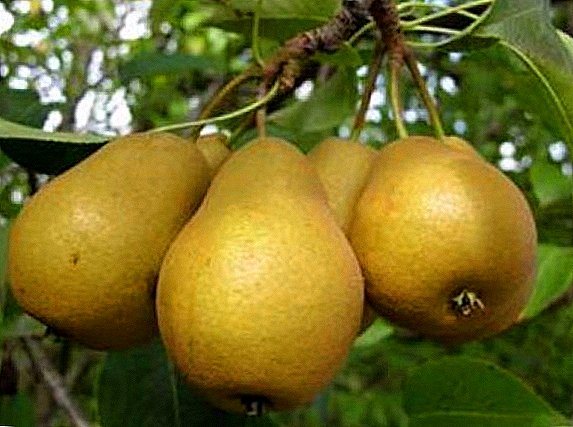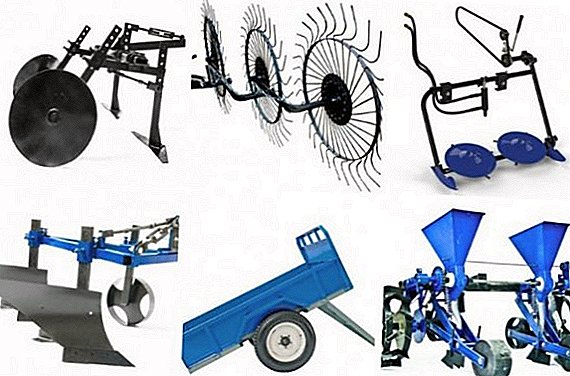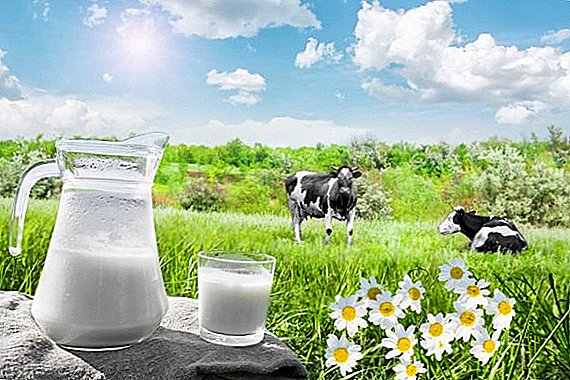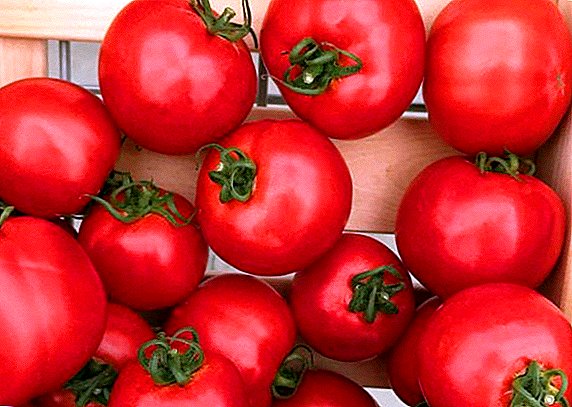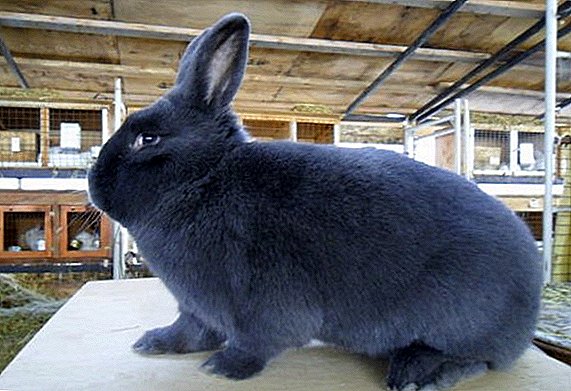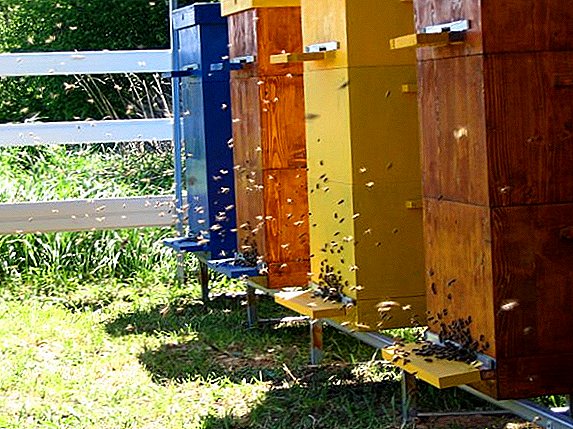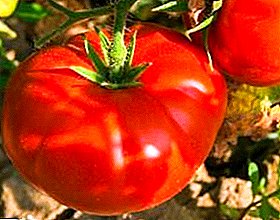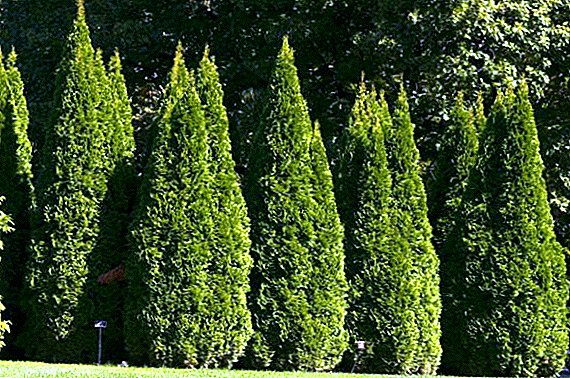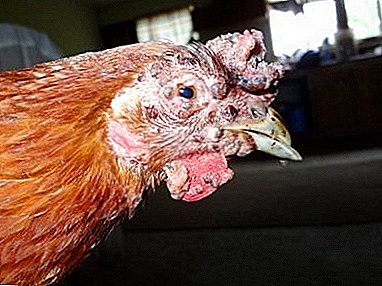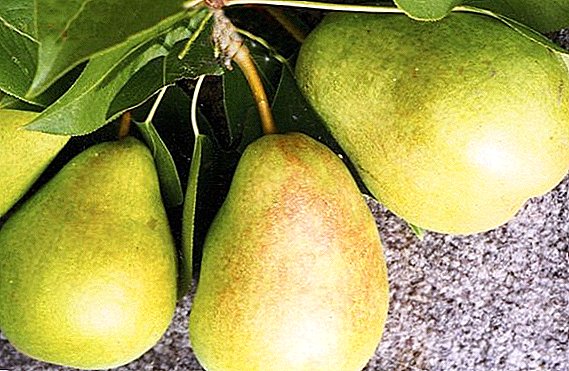 Many gardeners are enthusiastic about the variety of pear fairy. In this article we will discuss not only the main varietal characteristics, but also the conditions for its successful cultivation: demands on the soil, moisture and fertilizing. Following the information received, you can plant this beautiful variety and get a good harvest.
Many gardeners are enthusiastic about the variety of pear fairy. In this article we will discuss not only the main varietal characteristics, but also the conditions for its successful cultivation: demands on the soil, moisture and fertilizing. Following the information received, you can plant this beautiful variety and get a good harvest.
Description varieties pears Fairy
Pear Fairy Tale - a representative of the summer varieties of pears. They obtained the fairytale by crossing the autumn variety Poislaya with the winter-hardy high-yielding variety Tenderness (hence the high winter-resistance of the Fairy-tale variety). The variety was obtained in the early 1990s by three breeders: Falkenberg, Mazunin and Putyatin. Selection Fairy Tale was held at the South Ural Research Institute.
Important! This variety was bred specifically for planting in the harsh climate of Siberia.Now this pear variety is planted throughout the CIS, regardless of climatic conditions (except for the extreme north of the Russian Federation).
 The height of the tree reaches 4 meters. The pear tree of the Fairytale variety has a pyramidal crown shape and straight shoots. The branches depart from the trunk at an angle of 90˚. The tree is covered with small leaves, pointed at the edges. The sheet plates are painted in dark green. Fruits are pear-shaped, bright green at the time of collection. Immature fruits have a yellowish-green color. Fruit weight pears Fairytale can reach 250 grams, while the average weight is 180-190 g. The fruits are very tasty, juicy and tender flesh. Ripe pears have a faint aroma and flavor of spices.
The height of the tree reaches 4 meters. The pear tree of the Fairytale variety has a pyramidal crown shape and straight shoots. The branches depart from the trunk at an angle of 90˚. The tree is covered with small leaves, pointed at the edges. The sheet plates are painted in dark green. Fruits are pear-shaped, bright green at the time of collection. Immature fruits have a yellowish-green color. Fruit weight pears Fairytale can reach 250 grams, while the average weight is 180-190 g. The fruits are very tasty, juicy and tender flesh. Ripe pears have a faint aroma and flavor of spices.
Pear begins to bloom in late spring - early summer. Another feature of the variety is samoplodnost, however, to increase the number of fruits you can use pollinators.
Important! Productivity increases with the age of the tree. The maximum number of fruits can be collected only in the fifth year after planting.
The advantages and disadvantages of the variety
Each pear variety has both advantages and disadvantages. Some of them are insignificant, and some are more than. Therefore, before buying a seedling, it is important to understand whether this variety suits you personally or not.
Did you know? The tree was known in ancient times. Cultivated pear comes from ancient Greece (1000 years BC. E.).Grade advantages:
- resistance to diseases and pests;
- high winter hardiness (up to -48 ˚С!);
- excellent taste and shape of the fruit;
- good attachment of fruits to the branch;
- drought tolerance.

- very short shelf life of fruits;
- subject to damage during transportation;
- large size aboveground body.
Important! Disease and pest resistance does not depend on climate or growing conditions.
Some nuances of planting seedlings pear varieties Fairy
Pear Fairytale though undemanding to the conditions of detention, but it is necessary to follow the instructions for planting and growing varieties. It depends on the correct and timely planting whether the sapling will take root or perish. In addition, the wrong landing site can deprive you of the harvest or lead to further damage to buildings by tree roots.
When to plant
 Bought seedlings need to be planted in the middle of autumn (late September - October). Planting in the autumn due to the fact that the plant is asleep and during the winter will not be subject to destructive factors. Planting in the spring is possible, but you need to hold it before the movement of juices in the tree. If the seedling was purchased at any other time, it is best to plant it in a large pot and leave it for a while in a shed or garage with access to light.
Bought seedlings need to be planted in the middle of autumn (late September - October). Planting in the autumn due to the fact that the plant is asleep and during the winter will not be subject to destructive factors. Planting in the spring is possible, but you need to hold it before the movement of juices in the tree. If the seedling was purchased at any other time, it is best to plant it in a large pot and leave it for a while in a shed or garage with access to light.
Did you know? China is the world's largest pear producer.
How to choose and prepare a place for a pear
In order for the pear to take root and subsequently give a good harvest, you need to choose the right place that will meet the following requirements:
- low occurrence of groundwater;
- no clay layer at a depth of 3 meters;
- flat area;
- good lighting;
- the absence of buildings near the tree (this factor does not harm the pear, but the foundation of the buildings will be damaged);
- the soil should be dry and not salty.
The tree grows best on light, breathable soils that are not without humus. If the whole area does not work well fertilize, then you should properly prepare the hole. The pit under the sapling is digging a month before planting, so that the ground has time to settle. After that, the soil removed from the hole is mixed with humus and potash-phosphate fertilizers. If the soil is too acidic, then lime or wood ash is used.
Important! Making fresh manure when planting is strictly prohibited!The hole should correspond to the size of the roots, it should not be cobblestones, rotten plant debris or other debris.
How to plant seedlings
Proper planting of seedlings is not limited to the preparation of the substrate. In order for the tree to settle down, it is important not to damage the roots or weak shoots during the landing in the ground.
Before plunging the seedling into the pit, the roots should be washed (with warm water) and carefully inspected. The presence of rotten and diseased roots are not allowed, they must be removed. After that, cut off very long roots, giving a spherical shape to the root system (but do not get carried away, otherwise the tree will not survive). Slices can be treated with activated carbon chips. Also pay attention to the shoots. If there is rotten or dry - cut. 
Important! If the roots are very dry, then it is necessary to immerse the seedling in water for a day to soak. If the stem and leaves are in the same condition, then the whole plant is immersed in water.Planting is carried out in dry, windless weather, so that the plant does not freeze, and the roots do not start to rot from a sharp excess of moisture.
The depth of the pit should be no more than 80 cm, and the width - up to 1.5 m. The bottom layer is removed, and the top one (with the addition of fertilizers) is used to put the hole to sleep.
Before diving into the pit, the roots need to be straightened so that they occupy the maximum area. Planting is carried out so that the root neck does not cover the substrate (it must be either at ground level, or 5-7 cm higher). When filling the ground in the pit, lightly shake the seedling to get rid of the "air pockets". Be sure to drive a support in the form of a wooden peg at a distance of 35-30 cm from the center of the hole. After planting, make a circular hole near the seedling and pour enough water in there so that the soil is moist but does not turn into a swamp.
Did you know? The largest pear was grown in South Wales (Australia) in 1985. Fruit weight reached 1405 g.
Some tips for caring a fabulous pear in the garden
Good fruiting of the Fabulous pear variety depends not only on soil fertility and planting, but also on further care of it. Therefore, let's talk about the rules of watering, pruning and timely fertilizing the tree.
How often to water a pear
 You already know that the variety is resistant to drought, while it is important to understand that the juiciness of the fruit is achieved by wasting a large amount of moisture. Therefore, the most important periods when a pear needs abundant watering are from the beginning of flowering to the gathering of fruits. Since this happens in hot weather, you need to monitor the soil moisture every day. If the soil is dry, then the tree is watered under the root, using at least 5-6 buckets of water (the amount of water needed by the young seedling is much less).
You already know that the variety is resistant to drought, while it is important to understand that the juiciness of the fruit is achieved by wasting a large amount of moisture. Therefore, the most important periods when a pear needs abundant watering are from the beginning of flowering to the gathering of fruits. Since this happens in hot weather, you need to monitor the soil moisture every day. If the soil is dry, then the tree is watered under the root, using at least 5-6 buckets of water (the amount of water needed by the young seedling is much less).
For irrigation can not use sprayers, since moisture on the leaves leads to burns.
How to carry pear fertilizer
Even the most fertile soil is depleted over time, which necessitates pear dressing.
In the first 2-3 years after planting the pear should be fertilized with ammonium nitrate, if its growth has slowed down significantly. In the autumn, during easy digging, they apply the same fertilizers as during planting. A circle around the trunk is outlined and humus and complex mineral fertilizers are embedded in it. Depending on the size of the tree, adjust the width of the circle to maximize the absorption of useful substances. In the spring you can make the purchase of fertilizers, which are created specifically for pears, but make sure that the mineral composition was diverse, as a large amount of the same element can harm the plant.
Watch for the salinity of the soil, which over the years may increase. Do not forget to make lime in the ground, otherwise the tree may wither.
Did you know? The closest relative of a pear is a rose!
How to trim a pear
Experienced gardeners know that pruning a tree not only makes it more attractive, but also gives rise to growth, helps get rid of pests on dry branches and increases productivity.  Planned pruning of pears is carried out in spring, when the air temperature rises above 5 ˚С.
Planned pruning of pears is carried out in spring, when the air temperature rises above 5 ˚С.
We start with the rules of pruning, which must be observed in order not to harm the pear.
- You need to start pruning with branches that depart from the trunk of a tree.
- Cut shoots need at right angles.
- If the diameter of the shoot is more than 3 cm, then first the branch is filed from below, and then from above.
- After trimming the cut, you need to close the clay or garden pitch.
- Fertilizer should not be applied for 25-30 days after the event.
When the pear ottsvetet, branches with ovaries need to be bent so that they are perpendicular to the trunk of the tree. This will allow you to easily harvest.
One year after this pruning, shorten secondary branches to reduce thickening and reduce the risk of pests.
Important! An adult tree does not require annual shortening of the trunk, since pear growth slows down over time.
Time of ripening and storage of fruits
Harvest from a tree can be collected at the end of August, but if the weather is warm and there is no rain, then you can wait with the harvest. On a tree ripe pears do not spoil.
 Since the fruits are stored no more than 10-12 days after harvest, they should immediately be put on the juices, compotes or jam.
Since the fruits are stored no more than 10-12 days after harvest, they should immediately be put on the juices, compotes or jam.
The collection is carried out in dry weather. It is advisable to collect all the fruits at once, so as not to lose some of the harvest. After collecting, inspect the pears and discard rotten, broken or damaged by insects. A damaged or damaged fruit is not stored for 10 days and can cause rotting of nearby fruits.
Important! When the fruit begins to deteriorate, the flesh turns dark.If pears are to be transported, they should be laid only in one row, otherwise the delicate fruits will choke.
Despite the short shelf life, the fruit can be frozen as a whole, or in a shredded form (pieces or mashed potatoes). In this form, you can save the taste and vitamin composition of the fruit. Also, at a temperature of 2 ˚C pears can be stored in the refrigerator for about a month. Unfortunately, there are no other options for long storage of fruits.
Now you are familiar with the beautiful variety of Fabulous pears, know about the rules of planting and care, which will help you get a good harvest and protect the tree from diseases and pests.


